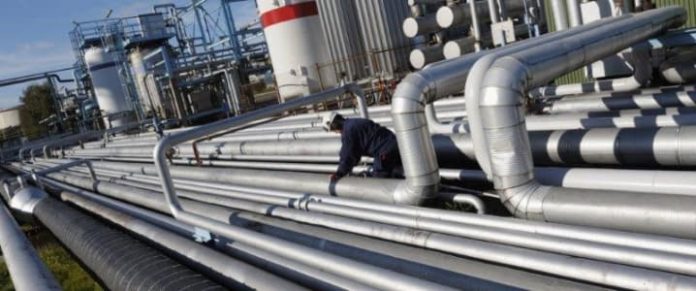For the second day running, the price Brent crude oil, Nigeria’s equivalent of Bonney Light plunged on Tuesday losing 8.9 per cent from the previous day’s closing price of $26.46 a barrel to $25.57 per barrel.
According to data from the Federal Reserve Bank of St. Louis. Brent declined 8.9% to $25.57 a barrel, noting that it’s far below the lowest level previous seen in continuation monthly data charts since 1946, just after World War II.
The latest price is about $5 short of the federal government latest benchmark of $30 per barrel. Thus further complicating the prospect of the country’s ability to meet her budgetary obligations for the year.
Meanwhile, earlier report says, there was panic in the market as Brent crude oil prices initially plummeted by over 20 percent into the $18 range in early morning trading, after Monday’s historic crash which left the West Texas Intermediate U.S benchmark settling at $12.05.
Analyst have expresses worries over the situation stressing that the drop, sparked by a perfect storm of COVID-19 fueled demand destruction and global crude storage facilities reaching their limits, is unlike anything markets have ever seen. Adding that the development has left everyone including veteran industry players scratching their heads.
They pointed out that from Asia to North America, all over the world oil producers and traders are looking for just one thing – a place to put their unwanted products.
Reports say in the North Sea, for example, vessels have been parked for days, loaded with gasoline and jet fuel with nowhere to go.
Even the world’s largest oil storage firm, Vopak, which operates three main facilities in Singapore, Rotterdam and Fujairah, is saying they’re at capacity.
Gerard Paulides, the chief financial officer of Rotterdam-based Royal Vopak NV, noted that “For Vopak, worldwide available capacity that is not in maintenance is almost all gone and from what I hear elsewhere in the world we’re not the only ones.”
In addition to the storage crisis and COVID-19 fueled demand destruction, there are independent reports that a wave of oil from Saudi Arabia was heading to U.S. shores. This is coming against analysts perceptions that with little commercial space available, the additional crude could potentially force deeper production cuts in the U.S. shale patch in the coming months, an issue that has been the center of a heated debate in Texas.


